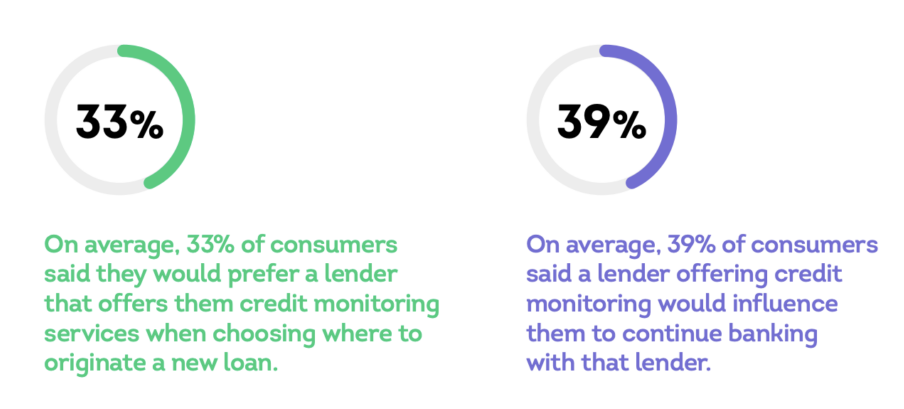According to a new TransUnion global study, the motivations behind consumers monitoring their credit differ, with an estimated 55% of Americans doing so with the goal of opening a new credit account.
Research found that three in 10 U.S. consumers, or roughly 30%, monitor their credit to better manage their debt levels, while just 15% seek to improve their credit scores.
TransUnion conducted a global research study examining credit behaviors for millions of consumers in both developed and developing markets, including the U.S., Brazil, Canada, Chile, Colombia, the Dominican Republic, Guatemala, Hong Kong, India, the Philippines, South Africa, and the United Kingdom.
To better understand the distinct profiles, motivations, and future outcomes of credit monitoring consumers, the study used depersonalized credit data to analyze these outcomes for new-to-credit, underserved, and credit-served consumers.
“Consumer credit monitoring has expanded considerably in awareness and usage over the past decade. This expansion has recently been fueled by the impact of the pandemic on consumer finances and the heightened familiarity among consumers of becoming victims of credit fraud,” said Charlie Wise, Co-Author of the study and Head of Global Research and Consulting at TransUnion. “Our study measures the importance of credit education and quantifies the benefits that credit monitoring consumers experience."

In the U.S., 86% of surveyed consumers stated that it is at least moderately important to monitor their credit, with three in 10 saying it’s extremely important. More than half of consumers (58%) report monitoring their credit at least once per month, with 22% and 10% checking weekly and daily.
"These benefits are shown to lead to better credit profiles, greater access to credit, or an improved ability to pay down debt, depending on the intent of consumers who monitor credit,” said Wise.
The most common reasons U.S. consumers initially signed up for credit monitoring services were:
- It was free (35%)
- To improve their credit score (32%)
- To monitor their report for accuracy (31%)
After using monitoring services for some time, consumers reported the added benefits that credit monitoring has allowed them to achieve, including:
- Gain visibility to changes on their credit report (42%)
- Learn how to manage their credit score (41%)
- Detect fraud (39%)
- Pay down debt (24%)
The study further identified three distinct segments of credit monitoring consumers based on their primary motivation for monitoring their credit. These included credit seekers, credit managers, and credit improvers.
How do credit seekers benefit from attaining new credit?
- The study found that more than half of the credit monitoring population (55%) is doing so with the intention of attaining new credit. Credit seekers are consumers with near-prime and above credit scores who monitor their credit with the intention of opening new credit accounts in the near future.
- When comparing credit seekers who monitor their credit to those that do not, credit monitoring consumers open 1.16x more credit accounts, such as credit cards and auto loans, over the following year.
- Both new-to-credit (NTC) consumers—those early in their credit journeys—and underserved consumers—those less engaged in the credit market overall—also saw similar higher activity for the credit monitoring segment.
- NTC consumers who monitor their credit display 1.21x higher origination rates for any credit product than those who do not monitor their credit, and for the underserved, it is 1.24x.
- Served consumers, those with established credit histories and readily available access to credit, saw a 1.14x higher rate of opening new accounts.
“For new-to-credit and underserved consumers, who typically have a more difficult time expanding their credit wallets, credit monitoring can be a crucial enabler of greater credit education and access,” said Wise.
Do credit improvers benefit from improving scores and staying current on obligations?
Credit improvers, which make up 15% of the U.S. credit monitoring population, are defined as consumers with subprime (poor) credit scores who likely use credit monitoring to understand their current credit situations and take steps to improve their credit scores.
The study found that credit improvers in the U.S. generally experienced credit score improvements by an average of 28 points one year after they started monitoring their credit. The improvement was even better, at 35 points, for NTC consumers.
“While Credit Improvers make up the smallest segment of credit monitoring consumers in the U.S., they also tend to see some of the most impactful benefits in terms of credit improvement,” said Lindsey Downing, Head Consumer Interactive Business for TransUnion. “It’s a clear indication that those consumers who are actively looking to improve their credit health may achieve better results if they monitor their credit and are able to plan their steps and track their progress.”
To read the full report, including more data, charts, and methodology, click here.

 DSNews The homepage of the servicing industry
DSNews The homepage of the servicing industry









